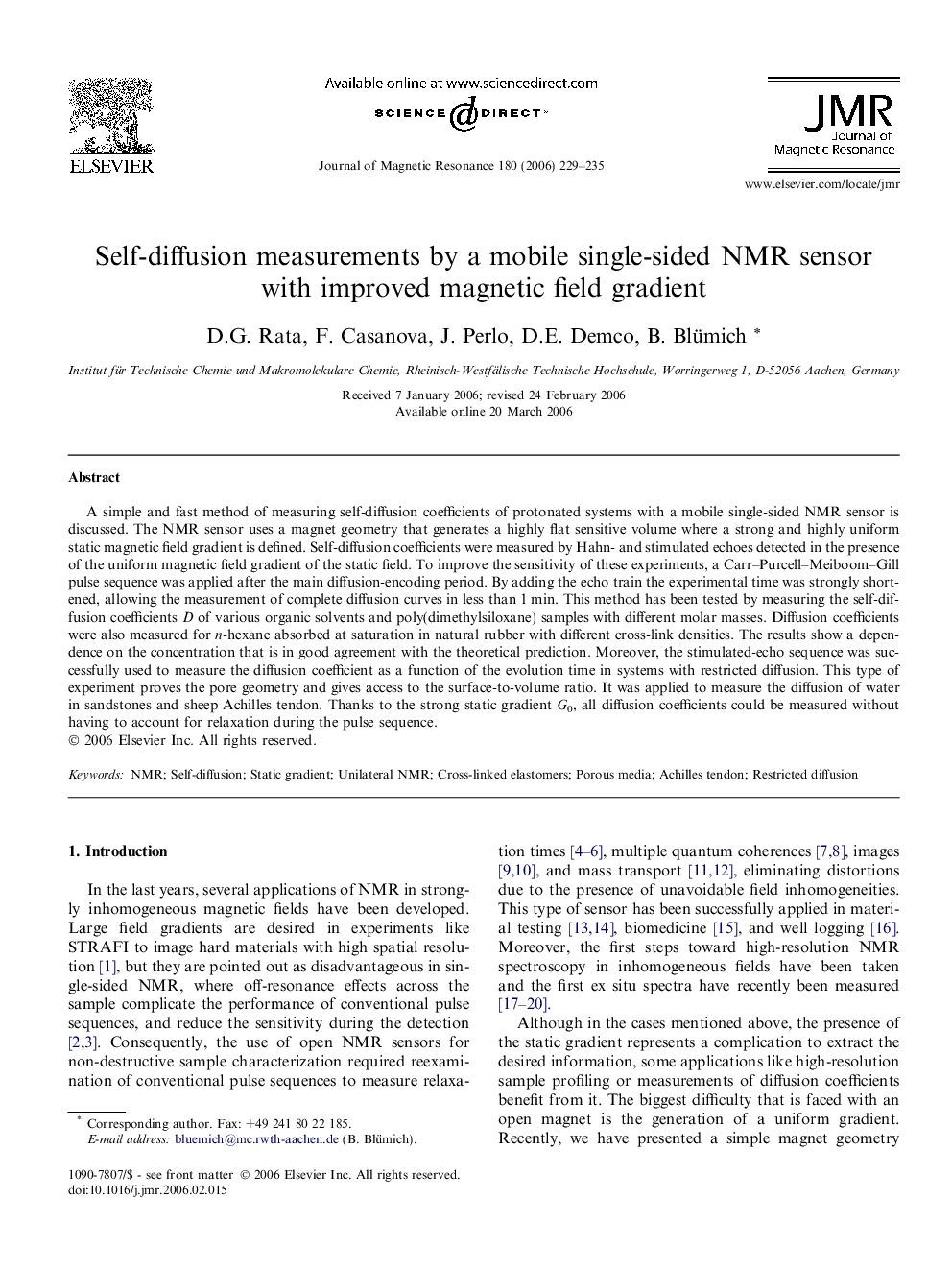| Article ID | Journal | Published Year | Pages | File Type |
|---|---|---|---|---|
| 5407571 | Journal of Magnetic Resonance | 2006 | 7 Pages |
Abstract
A simple and fast method of measuring self-diffusion coefficients of protonated systems with a mobile single-sided NMR sensor is discussed. The NMR sensor uses a magnet geometry that generates a highly flat sensitive volume where a strong and highly uniform static magnetic field gradient is defined. Self-diffusion coefficients were measured by Hahn- and stimulated echoes detected in the presence of the uniform magnetic field gradient of the static field. To improve the sensitivity of these experiments, a Carr-Purcell-Meiboom-Gill pulse sequence was applied after the main diffusion-encoding period. By adding the echo train the experimental time was strongly shortened, allowing the measurement of complete diffusion curves in less than 1Â min. This method has been tested by measuring the self-diffusion coefficients D of various organic solvents and poly(dimethylsiloxane) samples with different molar masses. Diffusion coefficients were also measured for n-hexane absorbed at saturation in natural rubber with different cross-link densities. The results show a dependence on the concentration that is in good agreement with the theoretical prediction. Moreover, the stimulated-echo sequence was successfully used to measure the diffusion coefficient as a function of the evolution time in systems with restricted diffusion. This type of experiment proves the pore geometry and gives access to the surface-to-volume ratio. It was applied to measure the diffusion of water in sandstones and sheep Achilles tendon. Thanks to the strong static gradient G0, all diffusion coefficients could be measured without having to account for relaxation during the pulse sequence.
Related Topics
Physical Sciences and Engineering
Chemistry
Physical and Theoretical Chemistry
Authors
D.G. Rata, F. Casanova, J. Perlo, D.E. Demco, B. Blümich,
